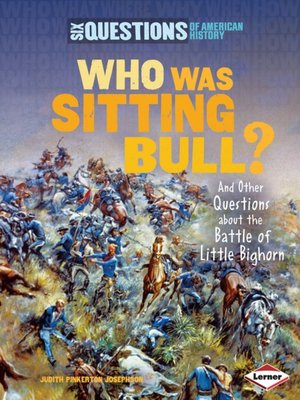Who Was Sitting Bull?
ebook ∣ And Other Questions about the Battle of Little Bighorn · Six Questions of American History
By Judith Pinkerton Josephson

Sign up to save your library
With an OverDrive account, you can save your favorite libraries for at-a-glance information about availability. Find out more about OverDrive accounts.
Find this title in Libby, the library reading app by OverDrive.



Search for a digital library with this title
Title found at these libraries:
| Loading... |
By the mid-1800s, thousands of white settlers were traveling westward through the Great Plains. Pioneers built farms and ranches, and companies laid railroads and dug mines. But the plains were the homeland and hunting grounds for many Native Americans. To protect their traditional lands, Native American warriors attacked white homes and settlements. The U.S. government tried to keep the peace by promising to keep white settlers and soldiers out of Native American territories. But the government broke its promise in treaty after treaty. The conflict between the U.S. Army and Native American nations peaked in 1876 in Montana at the Battle of Little Bighorn—the last great battle of the American West. So what Native American groups were involved in the battle? Who led the U.S. soldiers? How did the battle change life for Native Americans living on the Great Plains? Discover the facts about the Battle of Little Bighorn and learn more about the westward expansion of the United States.






